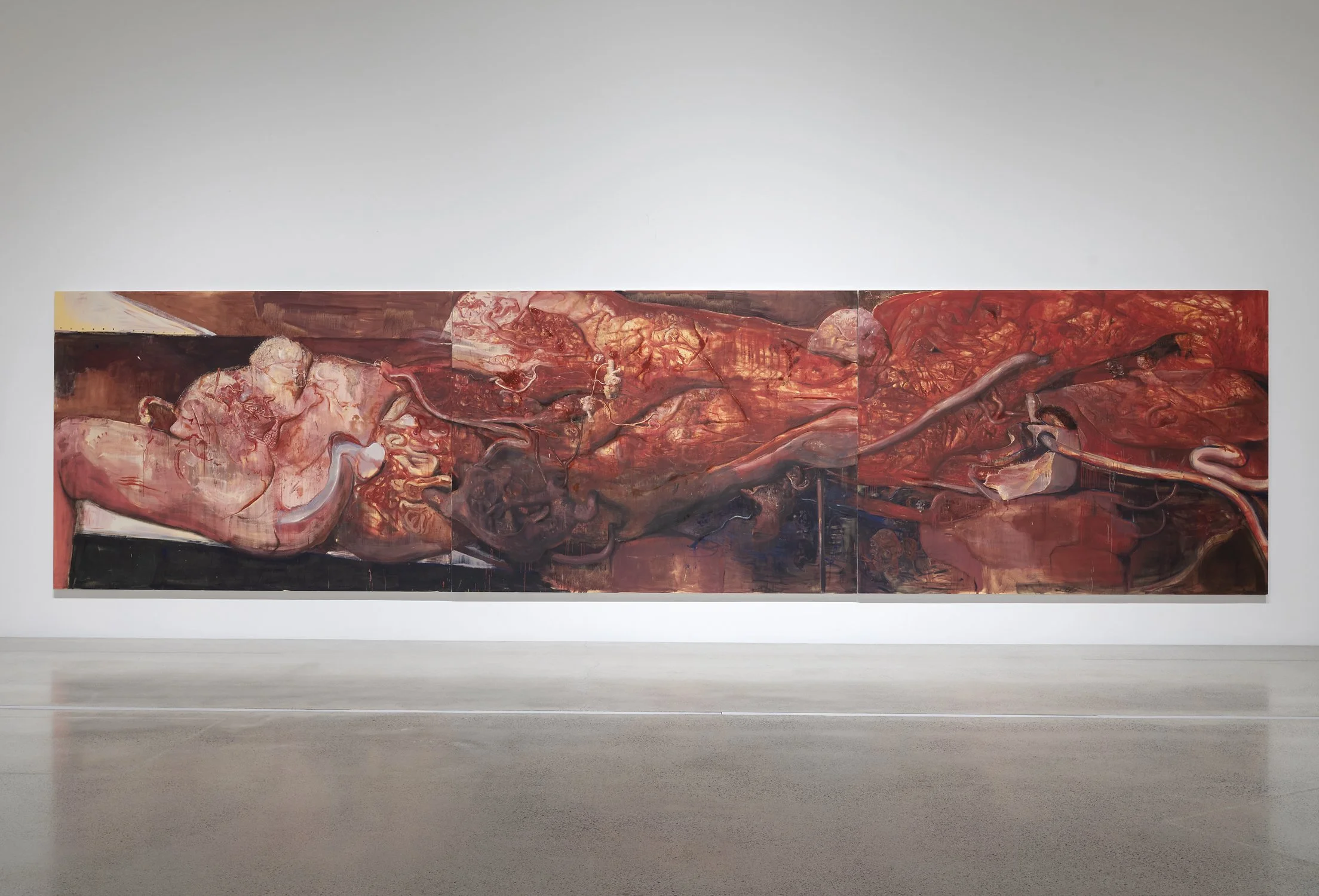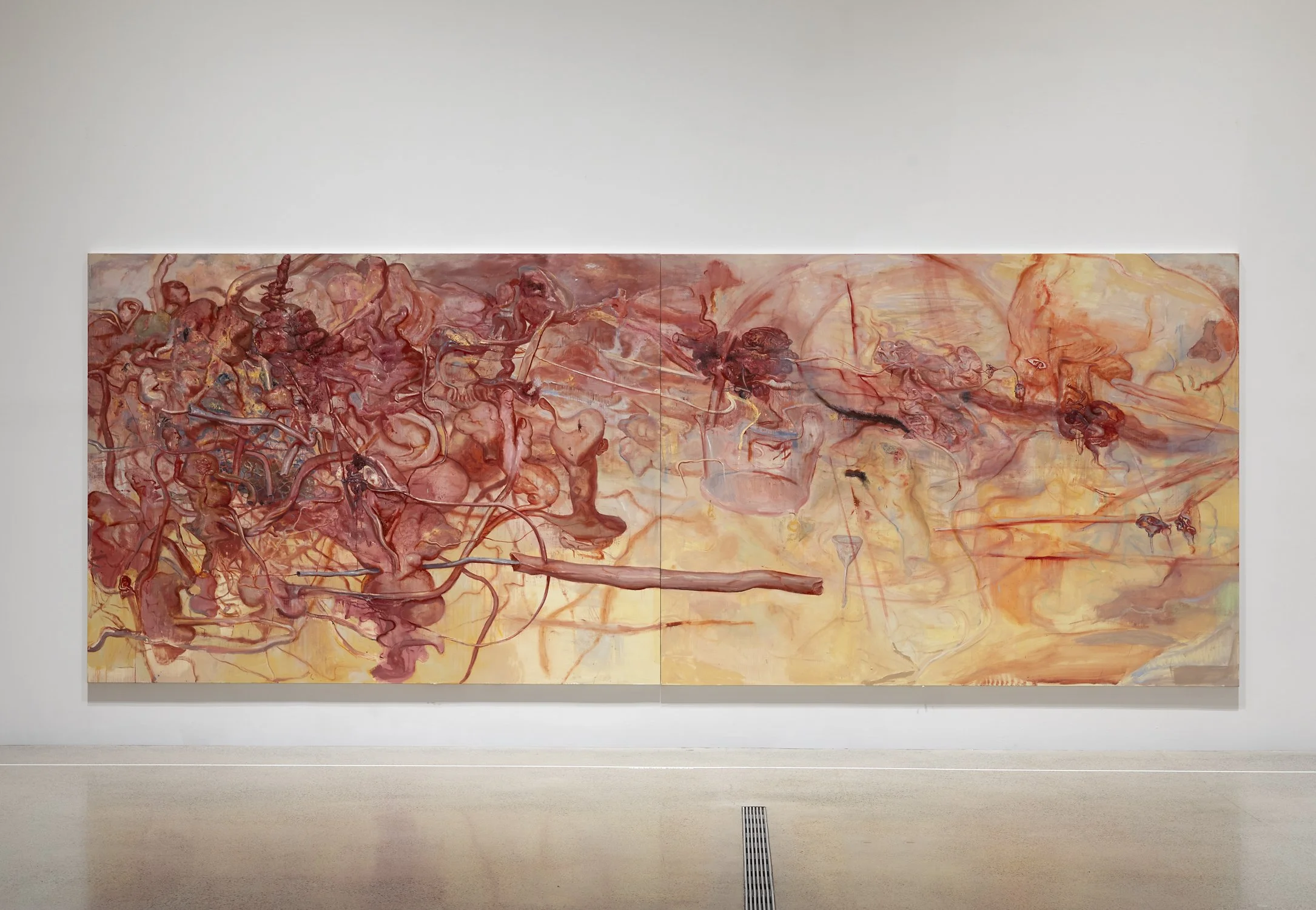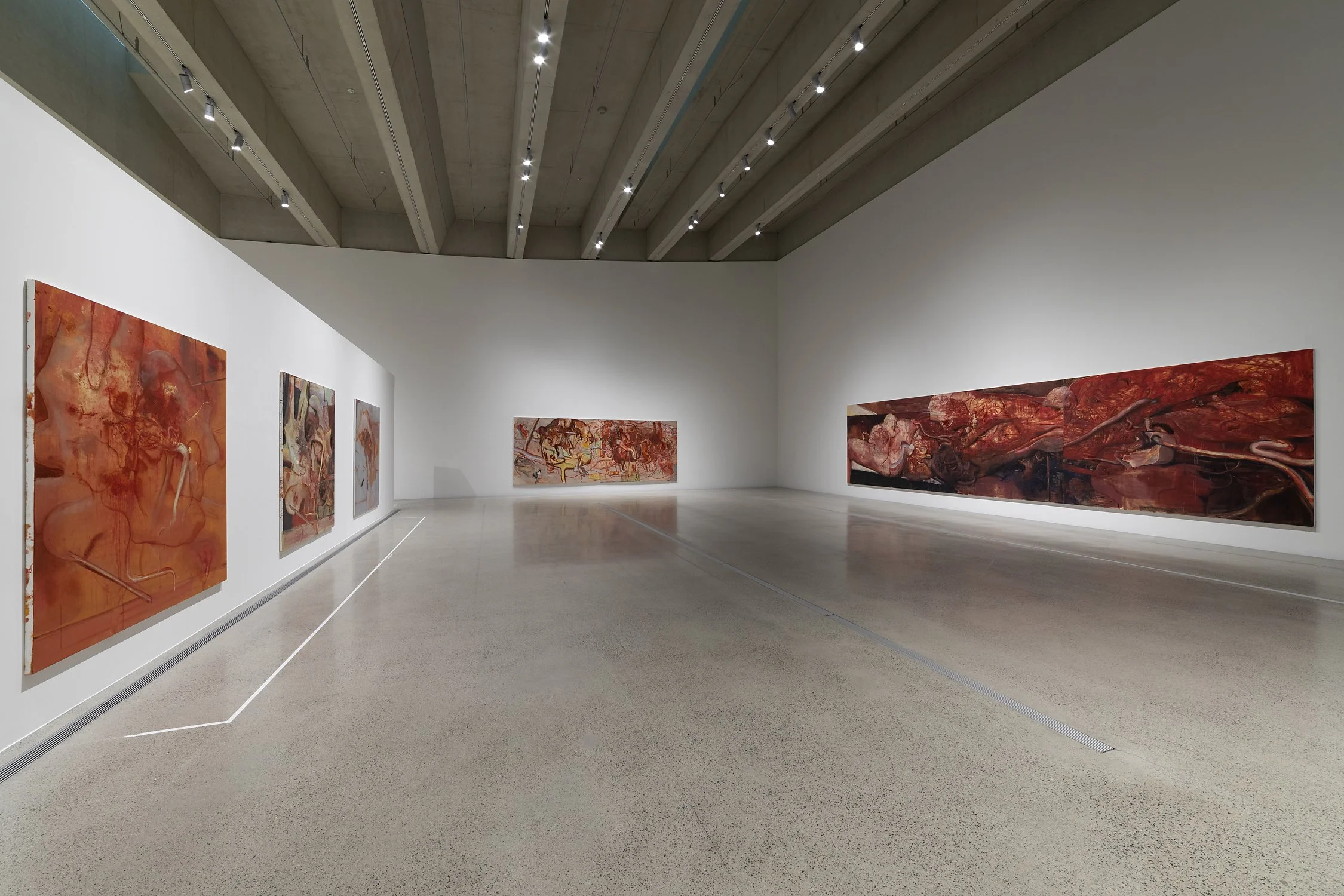"And then none were sick." - Interview with Lee Keunmin on his current solo show at Space K
Written by Valentina Buzzi (@cenestpasvale)
"Beauty is terror. Whatever we call beautiful, we quiver before it. And what could be more terrifying and beautiful than to lose control completely? To throw off the chains of being for an instant, to shatter the accident of our mortal selves? [….]If we are strong enough in our souls, we can rip away the veil and look that naked, terrible beauty right in the face; let God consume us, devour us, unstring our bones. Then spit us out reborn."
Donna Tartt, The Secret History
Art history has shown us that creativity and mental health are irreversibly linked. To create poetry in ancient Greece, one would have to go through a process of losing their sanity (an act called mania). In the work of The Romantics, the concepts of beauty and terror would continuously be bound. More recent art history has continued to portray the complex relationship between art and mental health through figures such as Van Gogh and Evard Munch.
Art is often intrinsically connected to suffering, but, crucially, art itself would offer a process of healing (the so-called catharsis) both in the act of producing and consuming it.
The art of Lee Keunmin emanates from these binomial connections as it is bound to his personal experience of dealing with hallucinations. In this sense, the pictorial process becomes an occasion to create "refined depictions of the most private realm of his psyche". It becomes a translation into visual matter of a deeply personal experience, revealing it to the public and thus inviting the viewers to confront themselves with the aesthetic macrocosms of his visions. Inspired by art brut but developing his own specific style, the artist paints fragmented bodies, organs, and abstract or metaphorical shapes that are for us to interpret and assimilate.
Despite being moved by a conviction that art can convey a positive outcome for the artist as well as for the viewer, the 20 paintings presented at SPACE K are also a carrier of deeper meanings. In the world of the curator, Zack Jang-Uk Lee, "Behind the splendid images of visions and illusions that dominate the canvas, the artist criticises society's norms and systems for diagnosing and controlling pathological signs. His paintings attempt to recover the scars made by the violence of dichotomous nature that separates normal and abnormal, rational and irrational, logic and absurdity, sharing self-healing and self-consolation with the viewers through the desperate landscape of his mind".
Lee Keunmin spoke to us about his current exhibition, his approach to art practice, the individual and sociological meaning of mental health and, of course, the possibilities of exploring relationships between art and illness.
The title of the exhibition is "And then none were sick". This seems to relate to your wider approach to art. Could you tell us about your choice of words and the leitmotiv behind the exhibition?
The museum named the exhibition, yet, as soon as I heard the title, I thought it was good. I thought this title was a dry but positive slant on the discussion of mental illness.
Would you like to tell us more about how the relationship between art and mental health works for you? Do you consider it a healing process?
There is catharsis in all works of art, regardless of their genre. The catharsis gives the art appeal, whether it is a pleasant or an unpleasant image. Thanks to that attraction, the audience connects to the artist. Artists certainly have a lot of time to be weak and hurt themselves, but they do not lose their fundamental narcissism. Cathartic points in the production of the work are an essential driving force for the artist. The cathartic effect of art can even be measured scientifically by examining the secretion of dopamine by those producing work.
Regardless of the subject of the work, all artistic actions themselves are a healing process for the artist. Of course, there are some for whom healing itself is a big theme and others for which it is not. I'm closer to the latter.
Could you tell us about your painting process? How do you go from seeing your hallucinations to translating them into canvas, and how do they influence your composition and choice of colour?
Most begin by instinctively reflecting on the wounds and memories that remain with me. It is a memory of hallucinations and illnesses that I saw and felt when I was hospitalised. Most of the memories from that period were of a dismantled human being or some kind of creature.
It's just a series of objects that haven't been given a proper name, so they are just ideas and abstractions. Through painting, I give these parts form. The title of my last series was Refining Hallucinations, which shows how I use hallucinations in my work. In terms of colour and form, instinct and memory work simultaneously. At that time, my hallucinations had warm, red and dark colours reminiscent of blood, flesh, and intestines.
Could you tell us about your relationship with art? When did you start painting or drawing, and how did that develop throughout the years?
According to my mother, I have been painting since I was three years old. Academic art education did not greatly influence me. I think perception and thinking about the world are more important than technique in painting. Of course, the author's output is influenced by real education and learning. There is, however, a limit to the development through schooling. Open thinking is much more essential to an artist's development. In my experience, art school has affected relationships with people more than it has affected my work.
How is the topic of mental health, particularly hallucinations, dealt with in South Korea? Have you faced much stigma for discussing these topics with your work?
Firstly, Korea has never had a major movement of outsider art. Rather than really examining the psyche, Korean society often aims to sympathise with and comfort those with mental illness. There isn't the desire to really tackle the darker elements of the mind.
Interaction with mental health is important in art and still dominates most of the creative process. I have no obligation to progress and illuminate this topic in Korea. Still, if I focus on expressing alienation or even something unsophisticated, sick, or ugly through my work, interest in this kind of outsider art will increase. I believe that a positive outcome will happen when artists are recognised as valuable beyond their pathological personal history. It's becoming more accepted in Europe; I will be happy if the "art of the sick" becomes popular in Korea.
What are your references in the history of art or painters that inspire you? How did they influence your artistic practice?
For me, identity directly changes the style and philosophy of painting. It's more of an energy that inspires you, and it can inspire not only creators but also loved ones, friends, and conversations. If I had to limit it to art influences, though, all the work of the Arbruna Outsiders was a big inspiration, especially Henry Dagger.
Among the paintings exhibited at SPACE K, is there any particular artwork that holds a particular meaning for you? If yes, would you like to tell us the story behind it?
All the pieces are important to me, but I think my 10-meter-long meter cloud tryptic contains enough narrative to penetrate my entire brain activity. It is more abstract, metaphorical, and dense than a named object, So I feel like the best way to describe it is as a "cloud". It also represents the online web, which has become one of the most crucial systems in the digital world. I felt that it was similar to a brain where the physical object of flesh coexists with thoughts and memories. I came up with the title and drew a triptych based on this concept in 2016.
For the 10-meter figure, I added small parasites on certain parts of the brain. Parasites create bugs and variables, or sometimes delete or distort the memories around them. Those errors and bugs trigger my delusions and add strength to my creation. Overall, I think the Matter Cloud series is a piece that shows how my brain works.
What would you like to convey to the audience through your art?
I don't want the audience to read all my statements or understand them as they are. A pathological and painful image can be an opportunity for positivity rather than solely capturing negative moments. I hope people remember that there is an artist who speaks for outsiders in another way.
"And then none were Sick", a solo show by Lee Keunmin, is on view at SPACE K until May 18th.
For more informations: https://www.spacek.co.kr/concert/view.do?eco_idx=221







